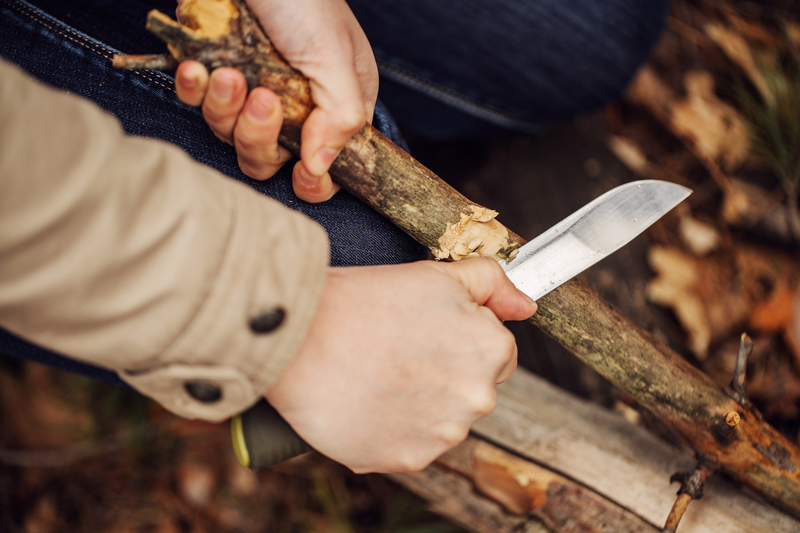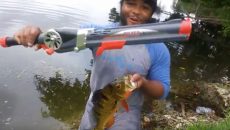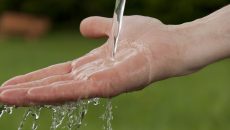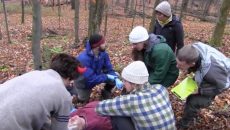Bushcraft skills are crucial for survival! If you don't know the following skills, this below tips will help you get started. From the bow drill method to foraging, there are always more skills for you to learn. Find out what you need to know below:
‘Bushcraft’ is a word that gets thrown around very often in the survival community, but it’s also a word that far fewer people understand it. A truly skilled survivalist is someone who can use resources provided by nature exclusively to survive.
We are going to provide you with a definitive list of bushcraft skills that will allow you to survive in the wilderness using no man-made materials whatsoever.
THE BOW DRILL METHOD
The best method for starting a fire without any man-made materials is the bow drill method. This method requires you to collect a flat piece of wood (to serve as the fireboard) with a notch cut into it. You also need a bow complete with a vine for the cord, and a sharpened stick as the spindle.
Have a tinder nest already made and different sized kindling on standby. Once you get an ember or smoke, you can transfer the ember into the tinder next to get your fire started. Proceed to add kindling, and you’ll have a fire going.KNOT TYING
The best knots to learn are the clove hitch, the blood knot, the bowline, the trucker’s hitch, and the timber hitch. As with the bow drill method, it’s best to practice tying each of these knots repeatedly until they become second nature to you.FORAGING
Buy a book on the different plants and berries in your area and study that book until you practically have it memorized. Numerous plants and berries look incredibly similar. Sometimes with look-alike plants, one could be poisonous to eat, and you don’t want to run the risk of misidentifying it.TRACKING GAME
Anyone can tell the difference between the track of a hoofed animal or an animal with claws, for example, but far fewer people will be able to discriminate between an elk and a moose or a wolf and a coyote, for instance.Learning animal tracks is not just important for hunting, but also for identifying any predators that could be tracking you.
HUNTING WITHOUT FIREARMS
Besides foraging and setting up traps and snares, your other option for catching game is to hunt them. Since you likely won’t have a firearm with you, you’ll need to make your own weapons from whatever you can find in nature: as bows, arrows, spears, clubs, and so on.SETTING TRAPS
Look, you may not have a rifle with you when you find yourself stranded in the wilderness, which means you’ll need to turn to alternative means to hunt game. Setting traps will be one of the best things you can do to catch small game. The beauty of setting traps is that you can tend to other duties related to your survival while you wait. Examples of traps you can set include the simple noose on a small game trail or a deadfall with bait.PURIFYING AND FILTERING WATER
The best way to treat water, without any shadow of a doubt, is to boil it for at least thirty minutes. Heat is going to be what kills the most bacteria and germs. If you don’t have the ability to boil water, the next best thing to do is to construct your own water filter. Construct a funnel out of bark and alternating layers of rocks, sand, and leaves. Run the water through it many times. It won’t get all of the bacteria out (which is why boiling is always better), but it will get rid of any visible offensive substances.TREATING A WOUND
Learn how to fashion splints for a limb fracture and how to suture up an open wound. Keep the wound as clean as possible and if it’s severe enough, give yourself some time to rest with a cool compress over your forehead and drink plenty of water.NAVIGATION
The best ways to navigate are to read the stars, follow a running stream of water, or to use the sun to figure out your bearings. Remember that the sun rises in the east and sets in the west, for instance.BUILDING SHELTER
While building a fire keeps you warm, your shelter protects you from the elements. If you don’t have a tent or a tarp with you, learning how to build a shelter with entirely natural resources will become even more vital to your survival.You’ll want the open area of the lean-to facing in the opposite direction of the wind, and for the shelter to be on the side of a hill if possible. Building a shelter on top of the hill, exposes you to the wind, but in a valley or beneath a hill means you’ll be vulnerable to potential flash flooding.
CONCLUSION
Are there more bushcraft skills that you could learn beyond the ones we covered? Absolutely. In fact, there’s probably an infinite number of bushcraft survival skills that you could learn to help you survive in the wilderness.But the ones that we covered in this article are by far the most important because they cover the basics of survival, meaning they are critical for emergency situations.
The list may seem overwhelming but when it comes to surviving, there's so much to put into consideration. Learning these bushcraft skills and practicing them in your free time can help you be a better prepper during a disaster.
For more on bushcraft skills, check out Modern Survival Online.




A picture us worth a 1000 words..the way that knife is being handled tells me a wanna be is writing this…..moving on.
Learn about wild harvesting foods that you don’t even know about. Did you know Day Lily roots are edible? Lots to learn. Start now.
Put a lot of yarrow on it. 😀